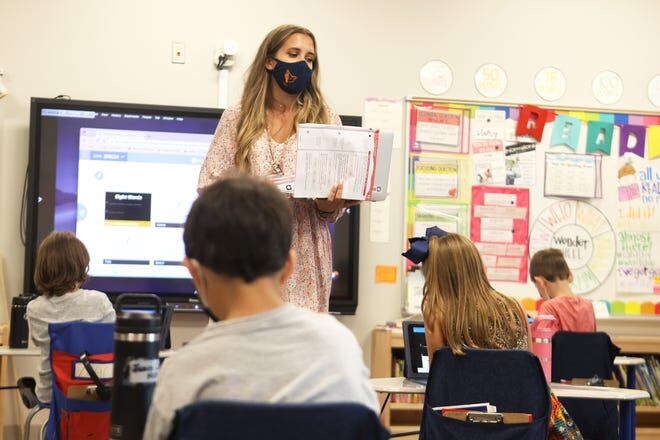Tennessee’s largest teacher organization estimates more than 16,000 public school educators working in school buildings have contracted the coronavirus and up to eight have died since July.
While it’s uncertain if the transmissions occurred at school, the Tennessee Education Association is leveling harsh criticism at the state for its handling of the pandemic.
Saying educators are “exhausted mentally, physically, and emotionally,” TEA leaders called Wednesday for more support, clearer guidance, and “tangible encouragement” in the way of raises and bonuses.
“The state must do more to assist with the burdens of teaching in a pandemic,” said President Beth Brown.
The group also released results of a statewide survey showing Tennessee educators are working more hours than ever, experiencing emotional stress, and managing new responsibilities for which they weren’t trained.
The survey results come as the legislature gears up for a special session focused on K-12 education beginning on Jan. 19. Gov. Bill Lee wants lawmakers to address quickly a growing list of pandemic-related teaching and learning challenges before taking up other business. He asked lawmakers to look specifically at teacher pay, school funding, literacy, learning loss, and accountability policies.
TEA’s pleas also coincide with the beginning of what’s expected to be another challenging semester for schools, especially as a new, more contagious strain of the virus has begun cropping up in the United States, most recently in neighboring Georgia. More districts statewide have pivoted to online classes in recent months as cases surged, while only Memphis schools have remained completely virtual this school year.
“We are starting to see infection rates move higher than ever, and yet there are some districts insisting on going back to in-person instruction,” said Brown, citing large school systems like those in Knox and Rutherford counties. “It’s quite alarming.”
State officials responded Wednesday that they have supported local districts so they can make “the best possible local decisions for educating their students.” The Department of Education has provided free protective gear and disinfectants, a support line for teachers, and free training on virtual instruction used by more than 20,000 teachers, said spokeswoman Victoria Robinson.
In November, TEA called on the governor to take immediate action to protect classroom teachers, including providing schools with high-quality protective gear, firm guidance on when campuses should close due to infection rates, and mandates so all students and staff wear face coverings for those that remain open. But Lee has stayed the course and consistently urged school districts to offer in-person learning options.
Health Commissioner Dr. Lisa Piercey has said schools have low rates of transmission, based on her department’s data.
TEA’s numbers are based on a representative sample of six large and medium-size school systems that offered in-person instruction and regularly published their case counts. Brown said her group’s analysis suggests that people teaching in classrooms have “significantly higher infection rates than the general population and in the communities they serve.”
For its survey, the organization asked educators in December about teaching conditions this school year and received responses from more than 7,000 teachers, administrators, and support staff. Tennessee has more than 78,000 certified educators and tens of thousands of school staff members serving nearly 1 million students in public schools.
While respondents were critical of local school officials’ handling of the pandemic, they aimed their harshest criticism at the state government, with 74% of respondents rating that response as poor.
Ten months into the pandemic, one-third of teachers surveyed said they are still less than adequately supplied with personal protective equipment and cleaning materials. “Most educators have once again dipped into their own pockets to purchase all the necessary supplies for their classrooms, and there is no excuse for that,” Brown said.
Last June, the Department of Education began releasing dozens of documents designed to guide school systems with their safety protocols — from reopening classrooms to keeping kids safe on school buses. But Brown said the survey indicates those “toolkits” may not have hit the mark.
“Educators are telling us that they just don’t feel equipped with the resources they actually need,” she said.








